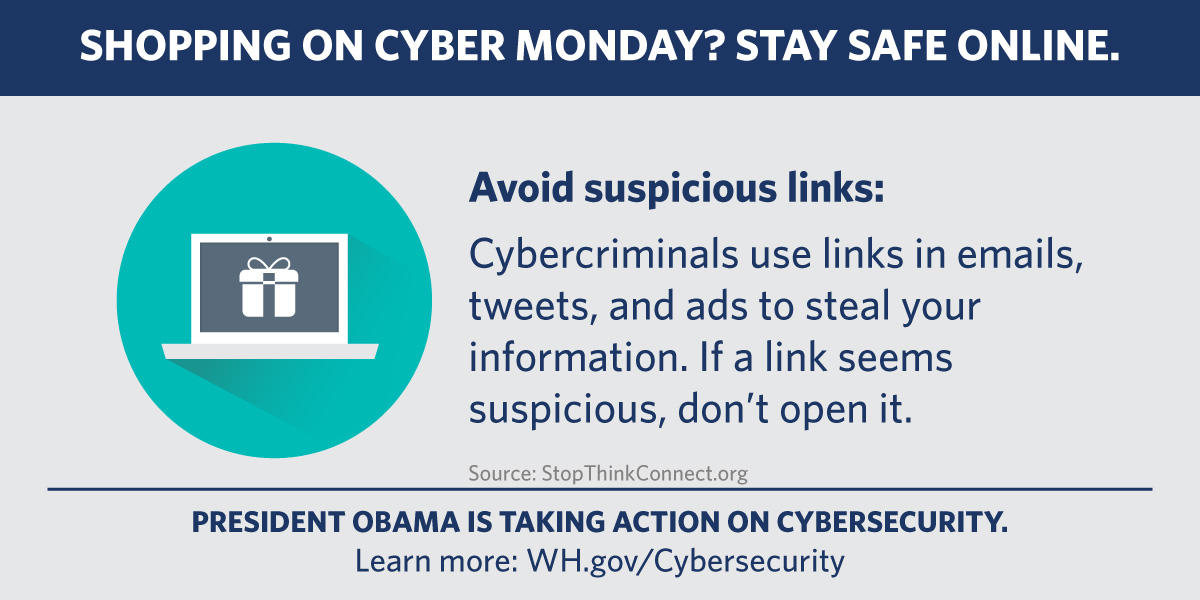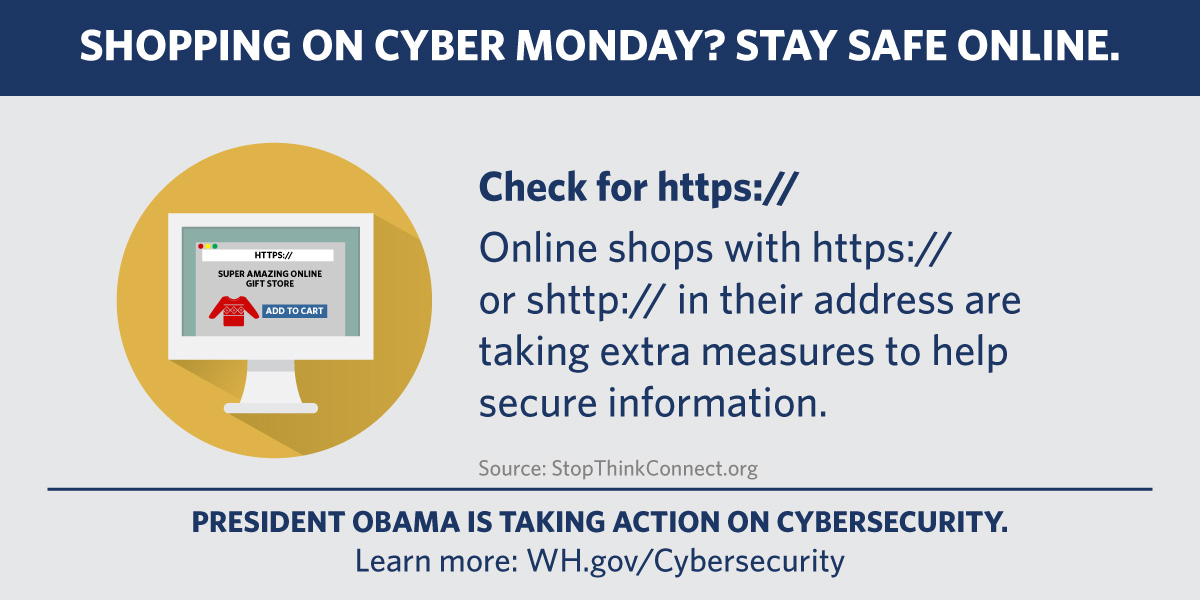
The Internet is part of everyone’s life, every day. We use the Internet at work, at home, to connect with those close to us, and to buy goods and services. That’s especially the case today, the Monday after Thanksgiving -- dubbed “Cyber Monday."
Today is far and away the busiest online shopping day of the year. Last year, according to Adobe, online shopping sales were over $2.29 billion for just one day. IBM said that shopping was up 20.6 percent over 2012 and experts expect a rise again this year. Along with increased convenience, shopping online also brings with it the potential for increased risks of theft, fraud, and abuse.
President Obama is taking action on cybersecurity. His 2013 Executive Order on Cybersecurity created an industry driven Cybersecurity Framework that has helped strengthen our businesses and networks. In October, he signed a consumer financial protection Executive Order that will move the government forward to invest in technologies that increase the financial protection and cybersecurity for everyone.
However, we can’t do this alone. Cybersecurity is a shared responsibility, and we each have a role to play when it comes to staying safe online.
With that in mind, we want to encourage you to shop online securely today by following three tips that come from Stop Think Connect -- a partnership between the Department of Homeland Security and industry.

1. Avoid Suspicious Links
Thieves online often use links to compromise your computer. It is so easy to click a legitimate looking link, but end up compromising your security. You are just generally safer to type in the address yourself or look it up on a search engine and follow that link.

2.Check for https://
When you are banking and shopping look for web addresses that start with “https://” or “shttp://” This means that the sites are encrypting your information from the browser to their site. It doesn’t solve every security concern, but it is much more secure than sites that do not take these extra steps. Sites that only say http:// do not have the same level of security.

3. Know Your Wi-Fi
When you connect your machine, you should only use legitimate Wi-Fi hot spots. You may also need to adjust the security settings on your computer or smart phone to limit who can access your machine when you are connecting through Wi-Fi other than at your home.
Of course, these suggestions don’t solve every issue, but they will absolutely help make you more secure as you shop. You can find a lot more tips at StopThinkConnect.org.
Meanwhile, we continue to work to solve the longer-term issues related to cybersecurity. Early next year, the President will sponsor a White House Summit on Cybersecurity and Consumer Protection, and we will continue working with Congress, companies, and security and privacy experts to continue to develop policy and technology solutions that can alleviate this problem.


